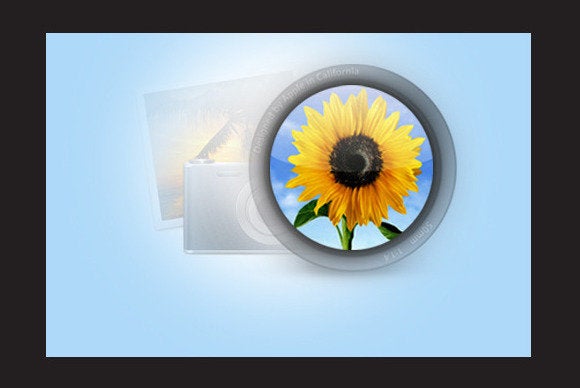iPhone Latest iPhoto Application- How To Use iPhoto For OS X Aperture--Download or install iPhoto for Aperture
Hello My Guys! usually limited to the few remaining customers that have stuck by it. In the case of Apple retiring iPhoto and Aperture, however, the disruption is much more broad: As iPhoto has been the included image management application on the Mac for years, it’s actively used by millions of customers. And although Aperture never made as many inroads into the professional community as Adobe’s Photoshop Lightroom, it was still the Apple-supplied pro option.Both programs are being replaced by Apple’s upcoming Photos for OS X application, which at this point is still a mystery: Will it incorporate the advanced features of Aperture, will it be a stripped-down limited clone of the Photos app under iOS 8.

important to recognize that you don’t need to immediately block off the next week to migrate your photo library. iPhoto still works and Aperture will be updated to work with OS X Yosemite, scheduled to appear this fall (likely October). That gives you at least a year assuming Apple won’t continue to support Aperture in the next OS X revision after Yosemite to plot a strategy, and more important, to evaluate options as they arrive.
Second, Apple has said that users will be able to migrate their existing photo libraries to Photos for OS X when the application arrives in “early 2015.” We don’t yet know what that migration process will look like, but it will probably be a built-in step the first time you run Photos that converts the library, just as previous updates to iPhoto and Aperture have done over the years.A big advantage on this front is the fact that iPhoto and Aperture share the same library format. Currently, you can open a photo library in either application without converting the data. Metadata and adjustments applied in Aperture that iPhoto doesn’t have inputs for are simply ignored. I suspect that will be the approach of Photos, pointing to a (hopefully) smooth migration process.

Aperture and iPhoto by default store your photos in a single library file (which is actually a “package,” a folder that OS X presents as a single file). The library includes much more than just the image files, including thumbnails of various sizes, database files, and a maze of nested folders
.Remove your photos from Aperture: To make it easy for you and third-party applications to access your images, get them out of the library package and into a regular Finder directory.



choose not to stick with Photos for OS X, or you want to explore your options before 2015, here are some applications that currently manage photo libraries. Most offer trial periods to get a feel for how they work.
process is pretty easy from Aperture, which can export metadata such as ratings, keywords, and location information intact. However, there is a slight complication. The adjustments made to photos you’ve edited apply only when you export the images as versions, which means saving them as JPEG files. If your photos are already in JPEG format, this isn’t an issue. Choose File > Export > Versions and export the images.
But if you capture photos in raw format, you can’t go back and tweak an adjustment using a different application (such as changing just the Shadows value or the mix of red, green, and blue channels in a Black & White conversion).
The workaround is to export edited photos with their adjustments applied, and then export the photos’ original files separately so you have the option of editing the source files later. Thankfully, Aperture’s Smart Albums make the process a little more manageable.

HOW TO UPGRADE TO PHOTOS OF OS X:
important to recognize that you don’t need to immediately block off the next week to migrate your photo library. iPhoto still works and Aperture will be updated to work with OS X Yosemite, scheduled to appear this fall (likely October). That gives you at least a year assuming Apple won’t continue to support Aperture in the next OS X revision after Yosemite to plot a strategy, and more important, to evaluate options as they arrive.
Second, Apple has said that users will be able to migrate their existing photo libraries to Photos for OS X when the application arrives in “early 2015.” We don’t yet know what that migration process will look like, but it will probably be a built-in step the first time you run Photos that converts the library, just as previous updates to iPhoto and Aperture have done over the years.A big advantage on this front is the fact that iPhoto and Aperture share the same library format. Currently, you can open a photo library in either application without converting the data. Metadata and adjustments applied in Aperture that iPhoto doesn’t have inputs for are simply ignored. I suspect that will be the approach of Photos, pointing to a (hopefully) smooth migration process.

HOW TO USE PHOTOS FOR IPHOTO OR APERTURE:
Aperture and iPhoto by default store your photos in a single library file (which is actually a “package,” a folder that OS X presents as a single file). The library includes much more than just the image files, including thumbnails of various sizes, database files, and a maze of nested folders
.Remove your photos from Aperture: To make it easy for you and third-party applications to access your images, get them out of the library package and into a regular Finder directory.

- Choose an option from the Subfolder Format pop-up menu. With None selected, all the photos appear together in the same folder. I prefer the Image Year/Month/Day option, which builds a folder hierarchy based on the photos’ capture dates.

Remove your photos from iPhoto:
iPhoto lacks a Relocate Originals command, so the photos in its library file remain there. You can start storing newly-imported photos into folders, however: Go to iPhoto’s settings (choose iPhoto > Preferences), click the Advanced tab, and turn off the first option labeled “Importing: Copy items to the iPhoto Library.

SWITCH FROM APERTURE:
process is pretty easy from Aperture, which can export metadata such as ratings, keywords, and location information intact. However, there is a slight complication. The adjustments made to photos you’ve edited apply only when you export the images as versions, which means saving them as JPEG files. If your photos are already in JPEG format, this isn’t an issue. Choose File > Export > Versions and export the images.
But if you capture photos in raw format, you can’t go back and tweak an adjustment using a different application (such as changing just the Shadows value or the mix of red, green, and blue channels in a Black & White conversion).
The workaround is to export edited photos with their adjustments applied, and then export the photos’ original files separately so you have the option of editing the source files later. Thankfully, Aperture’s Smart Albums make the process a little more manageable.
ALSO MORE iPHONE APP"S : CLICK HERE











